The Type 15 "Black Panther" is a third generation light tank operated for the PLA (Army) and PLAN (People's Liberation Army Navy Marine) as well as the Air Force Airborne Corps. A truly universal platform also exported to Bangladesh. It was designed to replace the Type 62 light tank declared obsolete and retired in 2013. It is also known as VT-5 when marketed for export. Dedicated to difficult or mountaineous terrains it is currently deployed on the China-India border in June 2020, and Tibetan Plateau.

It is now common knowledge that the light tank is largely considered an obsolete type, at least that was the general perception in the 1990s. No European country was planning any, not the US. Its last light tank was the M551 Sheridan. And it was already an oddball, tailored to fire short range massive 6-inches rounds or primitive ATGMs. The idea of the light tank was not dead as a few country maintained some in service as main battle tanks. Thailand for example had the Stingray, Argentina had the TAM.
But traditional tank manufacturers only capitalized on a new type that was gradually beefed up over the years and replaced the light tank: The Infantry Fighting Vehicle, a grown up, better protected and heavily armed version of the armoured personel carrier. On its side, China was mantaining a light tank in service, at least until 2013. The Type 62. This was essentially a modified Type 55 (manufactured in China with the help of USSR before the 1960 sino-soviet split.
The hull was just thinned out to lost almost ten tons. What was needed was a lower ground pressure for southern China swampy terrain and northwestern mountains. The Type 62 was also used by Naval Infantry. Th last upgrade was the Type 62G, but not all of the 1400 Type 62s were converted that way. The last were maintained in southern china. The need arose already in 2005 of a new light tank, perhaps taking the similar approach: Taking the latest version of the Type 99 and thinning it down. However it was soon recoignised that it would not be enough. Due to the scretive nature of this development, information is limited on the future Type 15.
There were a number of specifications that the old Type 62 could not match. The vehicle was to bring a firepower superior to existing infantry fighting vehicle (without the need of carrying troops) while being able, unlike existing main battle tanks, to negociate highland/plateau, woodland and water-rich regions, but also to work properly at oxygen-poor levels in mountains, where classic engines had difficulties: An hypoxic type of engine, not on offer at that time. The light tank was to have also ideally a better power to weight ratio than a main battle tank in order to act as reconnaissance tank in combined arms tactics.
First sights went as far back as 2011, so specifications probably were issued in 2008. Zhuhai AirShow China presented it by November 2016. Development all along was kept secret. First pictures appeared back in 2010. The whole development was not the object of any official comments and different prototypes were observed from 2010 onwards, so comments came from experts. They identified a brand new design and analyzed it only could be a successor to the Type 62 light tank, officially retired by 2011 without any stated replacement. Requirement were estimated to be at least 300 new light tanks. But given its further deployment, other orders were placed after its entered service by 2017, this time officially.
This new tank has a low-profile, edgy looking hull, and much smaller dimensions like contemporary MBTs such as the ZTZ-99 (50+ tons). Thanks to its powerplant, it had a generous power-to-weight ratio, between 27 and 30 hp/ton, in order to operate in mountains or marshy areas with the sufficient agility. Its layout is classic, like an MBT, with a crew of three: Driver seated at the front center, gunner and commander side by side in the edgy turret.
This is a small tank, at 9.20 m in length overall with gun forward (30.18 ft) and 7.5 metres (24.61 ft) for the hull alone. It is 3.30 m in overall width (10.83 ft) with the full ERA armour package, and 2.50 m in height, without the remote weapon station (RWS).
Armour packages of the ZTQ-15
The ZTQ-15 can be fitted with two different armor. The base design includes both hull and turret made with all-welded steel armor (RHA) for protection small arms and shell splinters. Meaning it's quite light, circa 8 mm on the back, sides, engine cover, part of the turret, and c15 mm for the glacis front and turrer frontal arc. To it, advanced composite armor or ERA bricks are available as shown in photos, both for the base model and export VT-15. At AirShow China 2016, VT5 sported a slat armor on its turret sides and hull to deal with RPG and ATGMs.
The protection range comprises passive composite armor as well as explosive reactive armor and various configurations were observed, as well as cage armor, with all sorts of possible combinations. The passive protection system includes a laser detector. It automatically launches the smoke grenade dischargers once illumination is detected, without human intervention. The ZTQ-15 had two sets of three smoke dischargers at the rear of the turret, either side of the turret bustle. This rear turret bustle is surrounded by two open air storage spaces for personal kit, protected by bar armour.
This section is containing the ready rounds, connected to an autoloader via a fireproof bulkhead. Thanks to the automatic loader, the turret only comprises a gunner and commander, both well protected thanks to blow-out panels. There are also fire extinguishers, all automatic of the Halon type, located in the driver, main combat, and engine compartments. There is also on both sides a partial side skirt, semi-rigid, made of five panels, to deflect incoming ATGMs/RPGs. The upper hull sides are generally protected by eight bolted-on spaced armour or semi-ERA blocks. The last feature is collective full CRBN protection (chemical, biological, radiological and nuclear), with inner spall liner, full sealing, overpressure and probably detectors.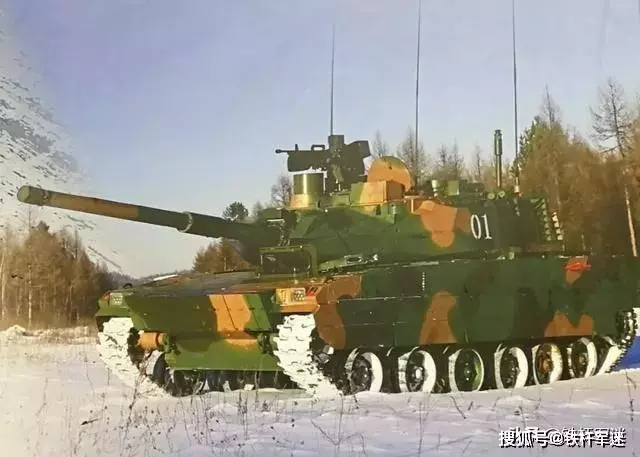
Early Type 15 tested in mountains
The Type 15 is well powered for a 30 tonnes tank: The large engine compartment at the rear houses a 1,000 hp (746 kW) electronically controlled diesel engine (probably multifuel). It is coupled with an hydro-mechanical full automatic transmission. The tank is allegedly capable of neutral steering. The drivetrain comprises a full set of small, tailored cast allow or steel roadwheels: Seven either side, three close together at the rear, three further apart forward, and one higher at the front acting as idler. Smal drive sprockets are located at the rear. These roadwheels are doubled and rubber-cladded to damp vibration on the tracks, of the single pin type but large enough to ease ground pressure. These wheel hubs features hydropneumatic suspension all along. The tracks are returned by three small rollers. The vehicle is generaly assumed to clumb more than 60% gradients, stay stable on side slopes of 30%, climb a 0.85 m tall wall or obstacle, gap a 2.5 m trench and ford 1.1 m of water.
Performances are above average for the category, according to official Chinese data and crossed references, 70 kilometres per hour (43 mph), possiby governed, and a range of 469 kilometres (291 mi) without external fuel drums. The Type 15 tank can be more airlifted by Y-20 transport planes (Type 99 but two Type 15) to be deployed over 7,800 kilometers. It also can be paradropped which is a considerable advantage, thus making it the prime support tank of the Chinese PLA Paratroops. It is likely there is also an auxiliary power unit (APU) to power the command and control equipment, battlefield management system, navigation suite with an inertial navigation system (INS), satellite navigation system (SATNAV) when cold. Having full sealing, it is likely the ZTQ-15 is able to ford above a meter of 3 feet high water to a point, and without preparation. It is not amphibious however and can't swim, having unsufficient buoyancy.
Ammunition selections comprised the "usual suspects", APFSDS, HEAT and HE as well as a small gun-launched ATGM. The latter can penetrate 500 mm (20 in) of RHA at 2 km (1.2 mi). The 105 mm APFSDS is unable to penetare the front armor of modern main battle tanks and the ATGM fitted with a tandem HEAT warhead is more efficient. The latter had a range ported to 5 km and the rapid calculation fire control system enabled to fire on low-flying helicopters if needed.
Aside the main gun, the Type 15 features a coaxial QJT-88, 5.8 mm as well as aroof mounted RWS fitted with the QLZ-04, 35 mm automatic grenade launcher plus coaxial QJC-88 12.7 mm heavy machine gun. This is a powerful combination enabling a very wide range of possibilities.
*27.8 hp/tonne with full ERA
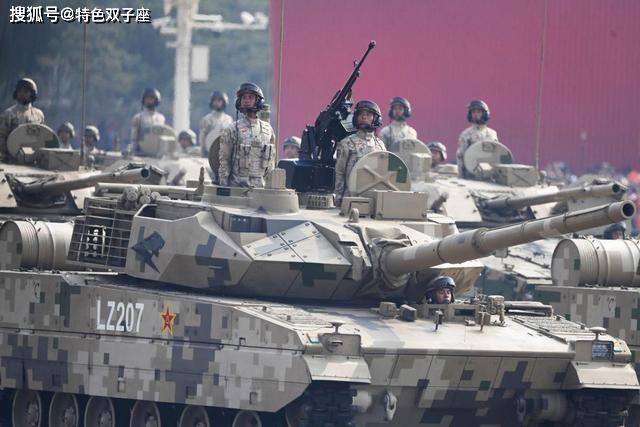
Northern desert pattern ZTQ-15 (Baidu)
The first unit operating the ZTQ-15 was the 123rd Combined Arms Brigade, part of the 75th Group Army in Southern Theater Command. This is considered pretty much an elite units trained hard for a future amphibious assault (presumably on Taiwan). Some sources report 250 such tanks in service by 2021. This was unique also as being procured to both the army and marines.
So far as of 2022, it is estimated the People's Liberation Army Ground Force possesses 500 tanks as of 2022. The People's Liberation Army Navy Marine Corps possesses 20 as of 2021. It is also allegedly attributed to China People's Liberation Army Air Force Airborne Corps, although it's not carried by tractical transports such as the Navy Shaanxi Y-8. On the Xi'an Y-20 is capable of carrying the Type 15 tank (2) but it's only in service with the PLAAF. More
Soon also an export version, VT5, was publicly revealed in 2016, offered for export. So far the Bangladesh Army is the only known customer, with 44 VT-5BD in service, all delivered. The VT-15 differs un many points and will ne seen in a dedicated article.
Gien its core caracteristics, based on a 33-36 t tons, (armor configuration differs). it featured an unparallel rapid redeployment capability and so was seen as a heavy support for reconnaissance and infantry operations, with the advantage of being airdropped and used on all difficult terrains forbidden to main battle tanks.
The Type 15 is currently deployed in units stationed in the south of China, Guangxi province (army and marine units), as well as a unit at the Tibetan Plateau, and another on the China-India border. So far it had made little overseas deployment, competitions or even exhibits, but in China. The current market for light tanks is reduced but seems to experience something of a bounce, as confirmed by the recent US Army acceptance of the M10 Booker, Korean K21-105, Russian 2S25 Sprut-SD, Turkish Harimau/Kaplan, Polish WBP Anders, Israeli Sabrah.
Development

It is now common knowledge that the light tank is largely considered an obsolete type, at least that was the general perception in the 1990s. No European country was planning any, not the US. Its last light tank was the M551 Sheridan. And it was already an oddball, tailored to fire short range massive 6-inches rounds or primitive ATGMs. The idea of the light tank was not dead as a few country maintained some in service as main battle tanks. Thailand for example had the Stingray, Argentina had the TAM.
But traditional tank manufacturers only capitalized on a new type that was gradually beefed up over the years and replaced the light tank: The Infantry Fighting Vehicle, a grown up, better protected and heavily armed version of the armoured personel carrier. On its side, China was mantaining a light tank in service, at least until 2013. The Type 62. This was essentially a modified Type 55 (manufactured in China with the help of USSR before the 1960 sino-soviet split.
The hull was just thinned out to lost almost ten tons. What was needed was a lower ground pressure for southern China swampy terrain and northwestern mountains. The Type 62 was also used by Naval Infantry. Th last upgrade was the Type 62G, but not all of the 1400 Type 62s were converted that way. The last were maintained in southern china. The need arose already in 2005 of a new light tank, perhaps taking the similar approach: Taking the latest version of the Type 99 and thinning it down. However it was soon recoignised that it would not be enough. Due to the scretive nature of this development, information is limited on the future Type 15.
There were a number of specifications that the old Type 62 could not match. The vehicle was to bring a firepower superior to existing infantry fighting vehicle (without the need of carrying troops) while being able, unlike existing main battle tanks, to negociate highland/plateau, woodland and water-rich regions, but also to work properly at oxygen-poor levels in mountains, where classic engines had difficulties: An hypoxic type of engine, not on offer at that time. The light tank was to have also ideally a better power to weight ratio than a main battle tank in order to act as reconnaissance tank in combined arms tactics.
First sights went as far back as 2011, so specifications probably were issued in 2008. Zhuhai AirShow China presented it by November 2016. Development all along was kept secret. First pictures appeared back in 2010. The whole development was not the object of any official comments and different prototypes were observed from 2010 onwards, so comments came from experts. They identified a brand new design and analyzed it only could be a successor to the Type 62 light tank, officially retired by 2011 without any stated replacement. Requirement were estimated to be at least 300 new light tanks. But given its further deployment, other orders were placed after its entered service by 2017, this time officially.
Design
General design

This new tank has a low-profile, edgy looking hull, and much smaller dimensions like contemporary MBTs such as the ZTZ-99 (50+ tons). Thanks to its powerplant, it had a generous power-to-weight ratio, between 27 and 30 hp/ton, in order to operate in mountains or marshy areas with the sufficient agility. Its layout is classic, like an MBT, with a crew of three: Driver seated at the front center, gunner and commander side by side in the edgy turret.
This is a small tank, at 9.20 m in length overall with gun forward (30.18 ft) and 7.5 metres (24.61 ft) for the hull alone. It is 3.30 m in overall width (10.83 ft) with the full ERA armour package, and 2.50 m in height, without the remote weapon station (RWS).
Protection

Armour packages of the ZTQ-15
The ZTQ-15 can be fitted with two different armor. The base design includes both hull and turret made with all-welded steel armor (RHA) for protection small arms and shell splinters. Meaning it's quite light, circa 8 mm on the back, sides, engine cover, part of the turret, and c15 mm for the glacis front and turrer frontal arc. To it, advanced composite armor or ERA bricks are available as shown in photos, both for the base model and export VT-15. At AirShow China 2016, VT5 sported a slat armor on its turret sides and hull to deal with RPG and ATGMs.
The protection range comprises passive composite armor as well as explosive reactive armor and various configurations were observed, as well as cage armor, with all sorts of possible combinations. The passive protection system includes a laser detector. It automatically launches the smoke grenade dischargers once illumination is detected, without human intervention. The ZTQ-15 had two sets of three smoke dischargers at the rear of the turret, either side of the turret bustle. This rear turret bustle is surrounded by two open air storage spaces for personal kit, protected by bar armour.
This section is containing the ready rounds, connected to an autoloader via a fireproof bulkhead. Thanks to the automatic loader, the turret only comprises a gunner and commander, both well protected thanks to blow-out panels. There are also fire extinguishers, all automatic of the Halon type, located in the driver, main combat, and engine compartments. There is also on both sides a partial side skirt, semi-rigid, made of five panels, to deflect incoming ATGMs/RPGs. The upper hull sides are generally protected by eight bolted-on spaced armour or semi-ERA blocks. The last feature is collective full CRBN protection (chemical, biological, radiological and nuclear), with inner spall liner, full sealing, overpressure and probably detectors.
Propulsion & Mobility

Early Type 15 tested in mountains
The Type 15 is well powered for a 30 tonnes tank: The large engine compartment at the rear houses a 1,000 hp (746 kW) electronically controlled diesel engine (probably multifuel). It is coupled with an hydro-mechanical full automatic transmission. The tank is allegedly capable of neutral steering. The drivetrain comprises a full set of small, tailored cast allow or steel roadwheels: Seven either side, three close together at the rear, three further apart forward, and one higher at the front acting as idler. Smal drive sprockets are located at the rear. These roadwheels are doubled and rubber-cladded to damp vibration on the tracks, of the single pin type but large enough to ease ground pressure. These wheel hubs features hydropneumatic suspension all along. The tracks are returned by three small rollers. The vehicle is generaly assumed to clumb more than 60% gradients, stay stable on side slopes of 30%, climb a 0.85 m tall wall or obstacle, gap a 2.5 m trench and ford 1.1 m of water.
Performances are above average for the category, according to official Chinese data and crossed references, 70 kilometres per hour (43 mph), possiby governed, and a range of 469 kilometres (291 mi) without external fuel drums. The Type 15 tank can be more airlifted by Y-20 transport planes (Type 99 but two Type 15) to be deployed over 7,800 kilometers. It also can be paradropped which is a considerable advantage, thus making it the prime support tank of the Chinese PLA Paratroops. It is likely there is also an auxiliary power unit (APU) to power the command and control equipment, battlefield management system, navigation suite with an inertial navigation system (INS), satellite navigation system (SATNAV) when cold. Having full sealing, it is likely the ZTQ-15 is able to ford above a meter of 3 feet high water to a point, and without preparation. It is not amphibious however and can't swim, having unsufficient buoyancy.
Armament
Type 15 light tank's centerpiece is a fully-stabilized 105 mm rifled gun, a derivative of the older ZPL-94 105 mm rifled gun copied frol the british L7 and fitted on Type 59/88 tanks. Its effective range is 3 km and the caliber makes it compatible with all NATO 105 mm ammunition. Thanks to the bustle-mounted autoloader system it is credited to fire on the move (3D stabilized) at 5-6 rounds a minute, with 38 rounds total in storage.Ammunition selections comprised the "usual suspects", APFSDS, HEAT and HE as well as a small gun-launched ATGM. The latter can penetrate 500 mm (20 in) of RHA at 2 km (1.2 mi). The 105 mm APFSDS is unable to penetare the front armor of modern main battle tanks and the ATGM fitted with a tandem HEAT warhead is more efficient. The latter had a range ported to 5 km and the rapid calculation fire control system enabled to fire on low-flying helicopters if needed.
Aside the main gun, the Type 15 features a coaxial QJT-88, 5.8 mm as well as aroof mounted RWS fitted with the QLZ-04, 35 mm automatic grenade launcher plus coaxial QJC-88 12.7 mm heavy machine gun. This is a powerful combination enabling a very wide range of possibilities.
Production and Variants
ZTQ-15 military version designation.
Type 15 Armored Recovery Vehicle
Based on the chassis, modified hull, tailored to salvage and tow the Type 15.VT-5
ZTQ-15 for export with a driver's hatch positioned at the center front hull and curved upper front hull, different modular add-on armor kitsVT-5U
Unmanned version of the VT-5, in trialsVT-5BD
Customized variant of the VT-5 for Bangladesh, new sleeve for the 105 mm rifled gun, modified fume extractor system. GL-5 APS, manual roof HMG.Type 15 specifications | |
| Dimensions | 9.2 gfw/7.5 m hull x 3.3 x 2.5m (30.18/24.61 x 10.83 x 8.20 ft) |
| Weight | 33 tonnes standard 36 tonnes, full armor package* |
| Crew | 3 (commander, gunner and driver) |
| Propulsion | 8V132 diesel 1000 hp (746 kW), 30.30 hp/t, fully-automatic transmission |
| Suspension | Hydropneumatic |
| Speed; road | 70 kph. Not amphibious |
| Range | 469 kilometres (291 mi), no external drums |
| Armament | 105mm rifled (38 rounds) autoloader, RWS 12.7mm, QLZ-04 grenade launcher |
| Armor | Standard steel RHA/composite, ERA. |
| Total production | c1200, still going on |
Public appearance, deployment and exports

Northern desert pattern ZTQ-15 (Baidu)
The first unit operating the ZTQ-15 was the 123rd Combined Arms Brigade, part of the 75th Group Army in Southern Theater Command. This is considered pretty much an elite units trained hard for a future amphibious assault (presumably on Taiwan). Some sources report 250 such tanks in service by 2021. This was unique also as being procured to both the army and marines.
So far as of 2022, it is estimated the People's Liberation Army Ground Force possesses 500 tanks as of 2022. The People's Liberation Army Navy Marine Corps possesses 20 as of 2021. It is also allegedly attributed to China People's Liberation Army Air Force Airborne Corps, although it's not carried by tractical transports such as the Navy Shaanxi Y-8. On the Xi'an Y-20 is capable of carrying the Type 15 tank (2) but it's only in service with the PLAAF. More
Soon also an export version, VT5, was publicly revealed in 2016, offered for export. So far the Bangladesh Army is the only known customer, with 44 VT-5BD in service, all delivered. The VT-15 differs un many points and will ne seen in a dedicated article.
Gien its core caracteristics, based on a 33-36 t tons, (armor configuration differs). it featured an unparallel rapid redeployment capability and so was seen as a heavy support for reconnaissance and infantry operations, with the advantage of being airdropped and used on all difficult terrains forbidden to main battle tanks.
The Type 15 is currently deployed in units stationed in the south of China, Guangxi province (army and marine units), as well as a unit at the Tibetan Plateau, and another on the China-India border. So far it had made little overseas deployment, competitions or even exhibits, but in China. The current market for light tanks is reduced but seems to experience something of a bounce, as confirmed by the recent US Army acceptance of the M10 Booker, Korean K21-105, Russian 2S25 Sprut-SD, Turkish Harimau/Kaplan, Polish WBP Anders, Israeli Sabrah.
Gallery

ZTQ-15 prototype with the Type 99A turret ERA package, 2010
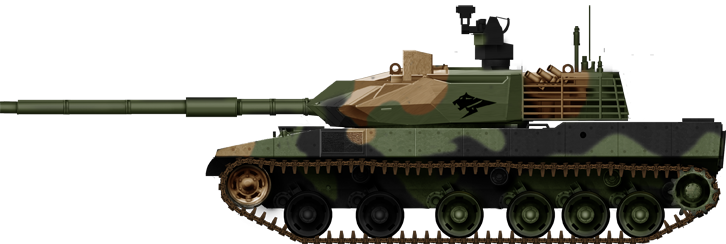
Standard green pattern, 2017

Northwest desert pattern, 2022
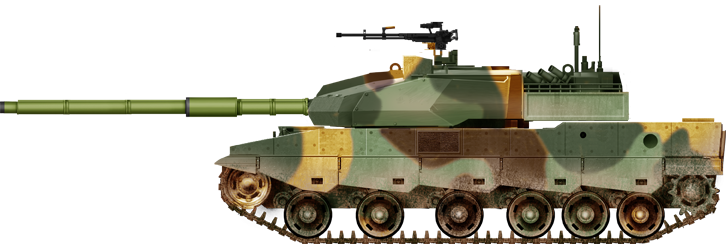
Bangladeshi VT-5BD as of today.
Gallery
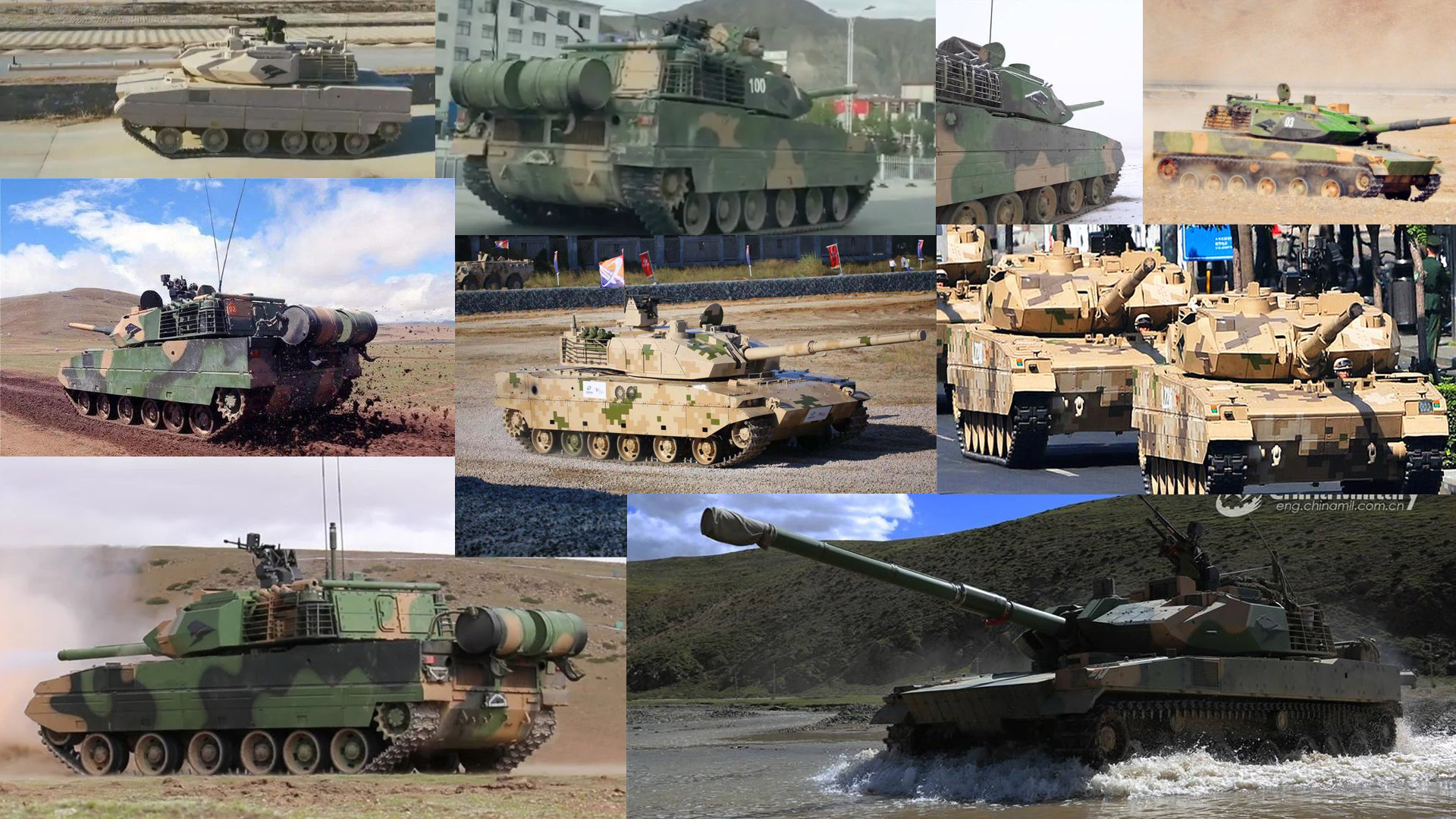
References from the web (not CC)

Marines ZTQ-15 impression (no photo found)
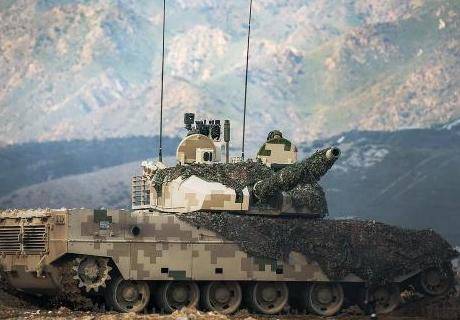
Mountain training, NW China, Nepal
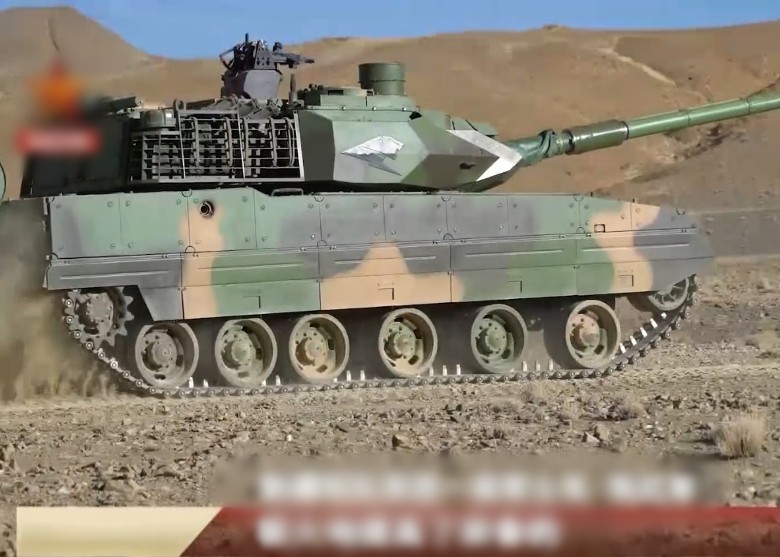
Close view
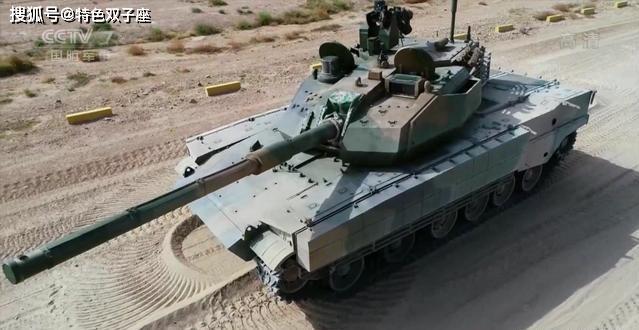
Top view
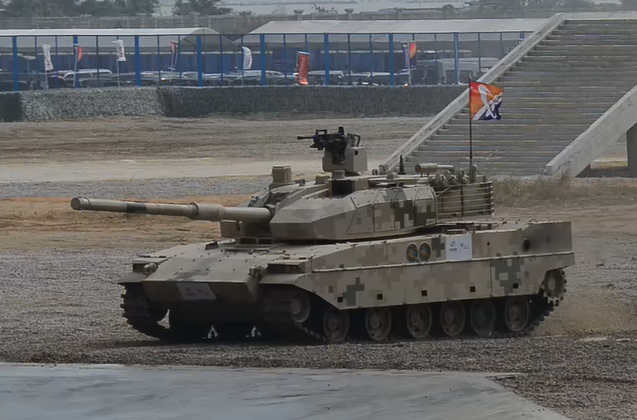
VT-5 (cc)
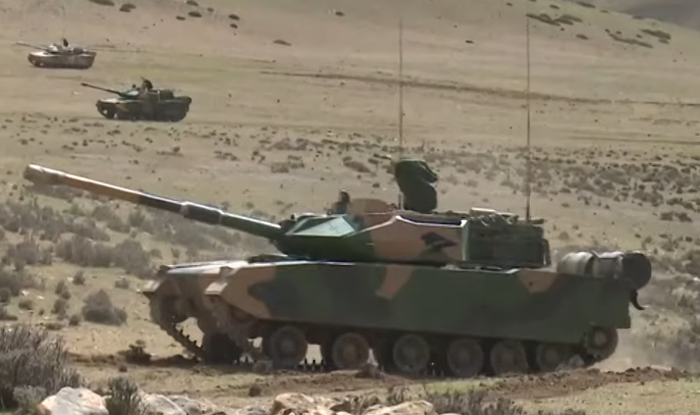
In manoeuvers, cropped on the tank, same
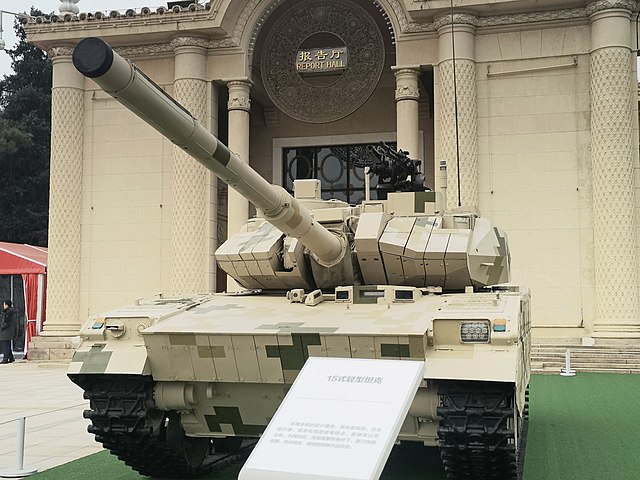
Full ERA package VT-5 exhibited in Pekin, CC
Links/Src
links
militarytoday.comarmyrecognition.com
twgreatdaily.com
chinatimes.com
armyrecognition.com VT5 delivered to Bangladesh 2021
zh.wikipedia.org
chinesetimes-laos.com, showing the gun stability
mil.sina.cn
sinodefenceforum.com
en.wikipedia.org
Video

Modern Tanks
Modern MBTs posters

Denel Bagder (2018)

Type 16 MCV (2016)

Gepard 1A2 last rounds 2011

SANDF

Russian AFVs

Main Battle Tanks
